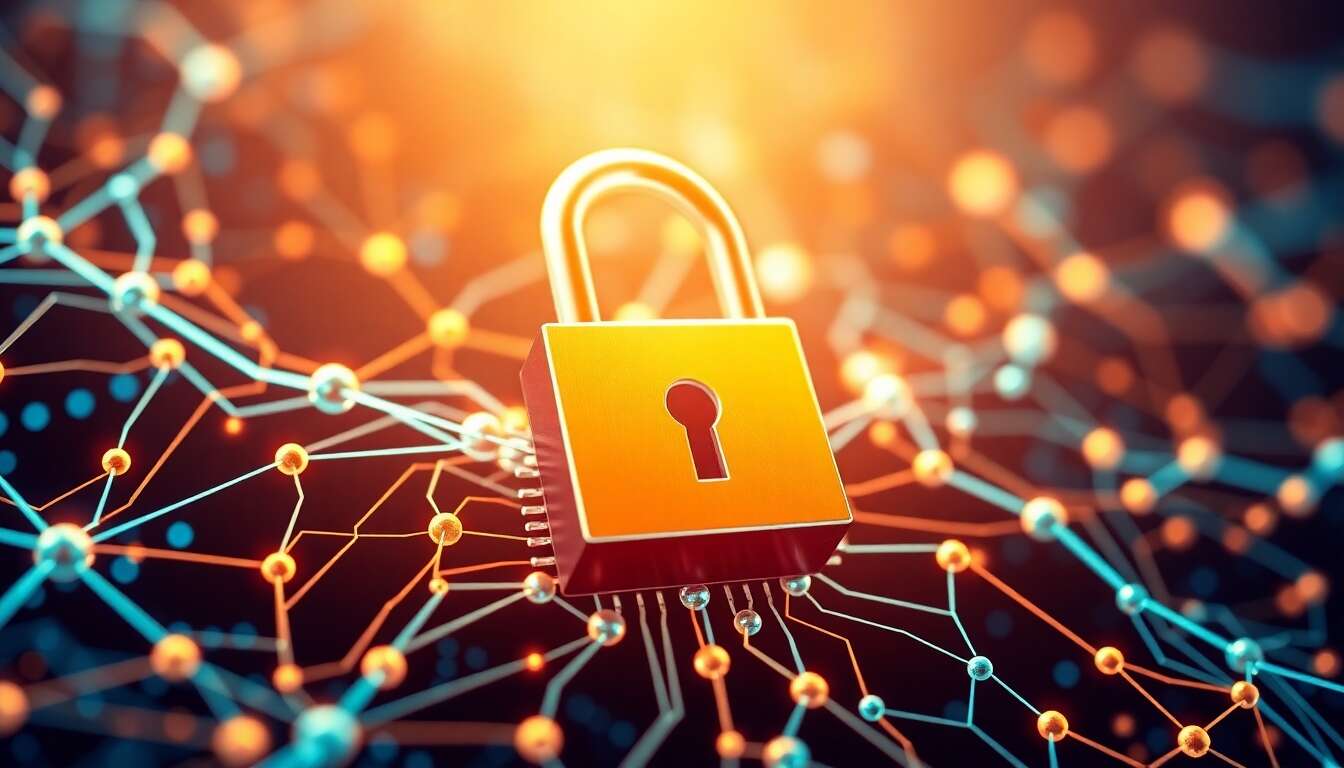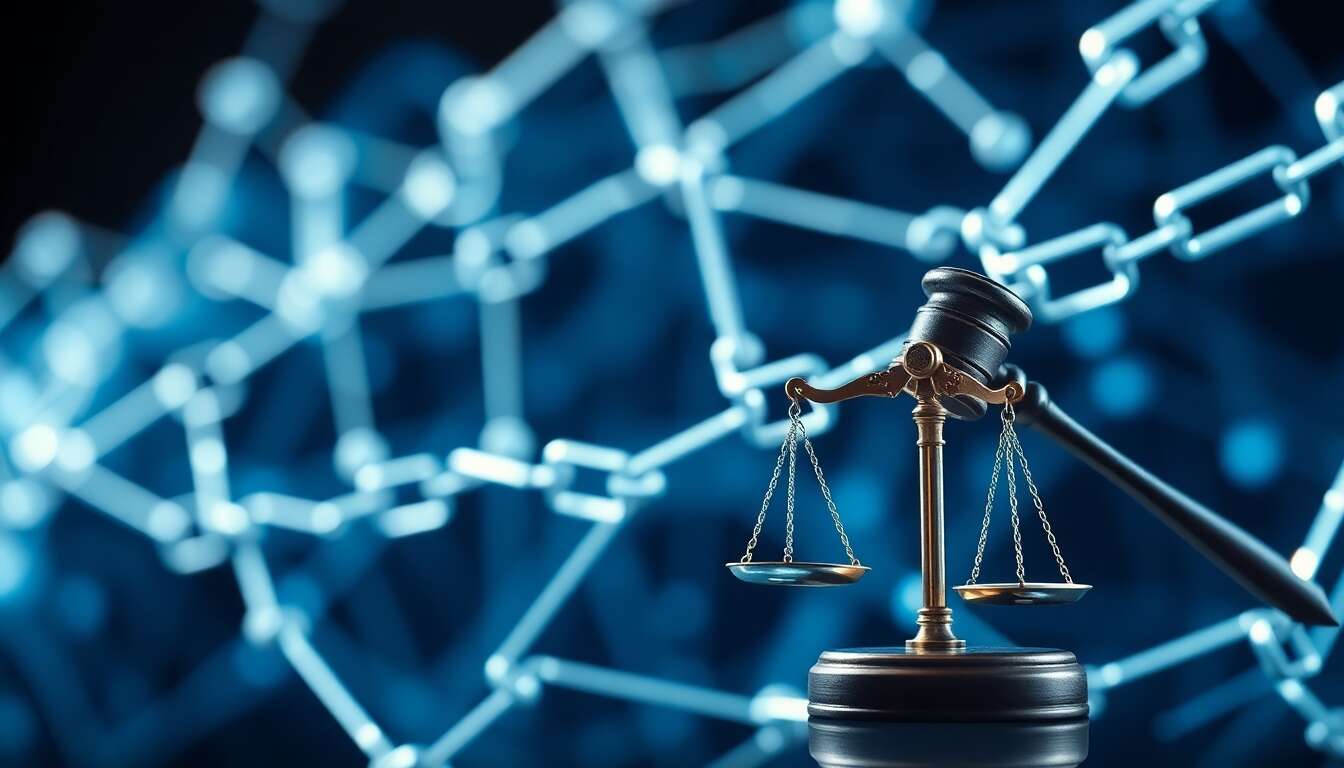Introduction
The blockchain technology, initially designed to secure online transactions, is experiencing significant growth as a formidable opponent against cyber threats. In the current landscape, which is characterized by a rise in attacks on decentralized systems, particularly through the Internet of Things (IoT), critical questions arise regarding data security and the robustness of infrastructures.
Introduction to Blockchain Network Security
Understanding the Basics
Blockchain technology is fundamentally a decentralized digital ledger used to record transactions across many computers. This decentralization ensures that the recorded transactions cannot be altered retroactively, providing a secure framework for data integrity. The security of blockchain is primarily derived from its encryption and consensus mechanisms.
Core Security Features
There are several key security features in blockchain networks:
- Decentralization: Data is distributed across multiple nodes, reducing single points of failure.
- Cryptographic Security: Each block is encrypted, ensuring data is protected from unauthorized access.
- Consensus Algorithms: Mechanisms like Proof of Work (PoW) and Proof of Stake (PoS) validate and secure transactions.
These features collectively contribute to the robust security framework of blockchain networks. As we delve deeper into the realm of blockchain, understanding its security challenges becomes imperative.
Main Security Challenges for Blockchain

Vulnerability to Attacks
Despite its inherent security advantages, blockchain networks face several vulnerabilities. Notable among these are:
- 51% Attacks: If a single entity gains control of more than half of the network’s hash rate, it can manipulate transactions.
- Smart Contract Bugs: Flawed codes in smart contracts can be exploited, leading to significant financial losses.
- Sybil Attacks: Attackers create multiple nodes to gain influence over the network.
Scalability Issues
Another challenge is scalability. As the number of transactions increases, the network can become congested, leading to slower transaction times and higher fees. This is particularly problematic for large-scale applications and enterprise solutions.
Addressing these challenges is crucial for the adoption and reliability of blockchain networks. Thus, innovative solutions are being developed to tackle these issues head-on.
Innovative Solutions to Enhance Blockchain Security
Advanced Encryption Techniques
To counteract vulnerabilities, new encryption methods are being explored. Techniques such as homomorphic encryption and zero-knowledge proofs allow transactions to be verified without revealing sensitive data.
AI and Machine Learning
Integrating artificial intelligence and machine learning can enhance security by monitoring network activity for unusual patterns, predicting potential threats, and automating responses to attacks.
Layer Two Solutions
Layer two protocols, such as Lightning Network, are being developed to improve scalability and transaction speed, ensuring the network can handle a larger volume of transactions efficiently.
These innovative solutions aim to strengthen the security framework of blockchain networks and build trust among users and enterprises. However, legal considerations also play a pivotal role in this ecosystem.
The Importance of Legal and Regulatory Frameworks

Establishing Legal Clarity
As blockchain technology evolves, the need for clear legal frameworks becomes increasingly evident. Regulations are essential to protect users, prevent fraudulent activities, and ensure compliance with global standards.
Challenges in Regulation
Regulating decentralized systems presents unique challenges due to their global nature. Different countries may have varying regulations, complicating international transactions and collaborations.
Despite these challenges, the establishment of coherent legal frameworks is crucial for fostering trust and encouraging widespread adoption of blockchain technology. This leads us to consider the broader implications of blockchain on data protection.
Impact of Blockchain on Data Protection
Enhancing Privacy
Blockchain offers enhanced privacy features through its decentralized structure. Users have greater control over their data, as blockchain eliminates the need for intermediaries who traditionally manage data.
Data Integrity
Blockchain ensures data integrity by recording all transactions immutably. This transparency reduces the risk of data breaches and unauthorized alterations, reinforcing trust in digital interactions.
With these benefits, blockchain is being increasingly viewed as a tool for strengthening data protection mechanisms. Looking forward, the future of blockchain security holds even more promise.
Future Outlook for Blockchain Network Security

Adoption and Integration
As awareness of blockchain’s potential grows, more industries are expected to adopt this technology. From finance to supply chains, blockchain offers solutions to various security concerns across sectors.
Continued Innovation
The future of blockchain security will likely see continued innovation in cryptographic techniques and decentralized applications, enhancing both security and usability.
These advancements will play a critical role in shaping the future security landscape, leading to a more secure and interconnected world.
Conclusion
The challenges posed by the security of blockchain networks, especially in the context of IoT, require innovative solutions to protect our critical infrastructures. While implementation costs and user adoption remain obstacles, it is evident that blockchain can play a central role in enhancing digital security. The regulatory and technical advances in the coming years will determine whether this technology can establish itself as a security standard in an increasingly interconnected world.



